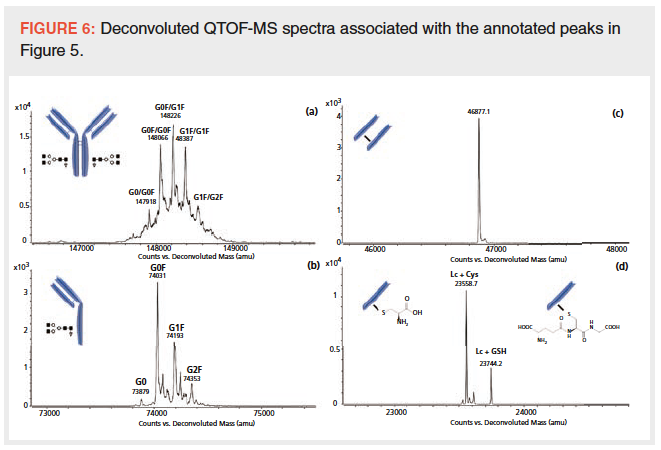Perspectives in Clinical and Pharmaceutical Solid-Phase Microextraction
Barbara Bojko previews the topic of solid-phase micoextraction for clinical and pharmaceutical research.
Solid-phase microextraction (SPME) can no longer be regarded as a new analytical method. Since the introduction of SPME in the early 1990s, the technique has become an established method for the analysis of fragrance and flavours, as well as an important tool for environmental analysis. Likewise, owing to the development of matrix-compatible coatings, the implementation of SPME for the analyses of semi- and nonvolatile compounds by direct immersion of SPME devices in complex matrices has been increasingly reported over the last 15 years (1).
Over this time, biocompatible SPME, which refers to the technology where a biocompatible coating ensures effective sample clean-up during extraction from biological samples, has come a long way in demonstrating its flexibility in method optimization, and thus its applicational versatility (1,2). At first, the majority of biocompatible SPME applications considered the extraction of drugs from blood or plasma, urine, or later, from oral fluids-usually in a high throughput and automated manner, but using fairly large (a few hundred microlitres) sample volumes. However, new breakthroughs in biocompatible SPME, such as the successful introduction of in vivo SPME to animal studies, first to larger animals and soon after to rodents, have propelled the technology forwards by expanding its suitability to a wide range of biological applications.
Currently, when ethical guidelines and legal regulations, such as the “3Rs rule” (Reduction, Replacement, Refinement), impose serious limitations on animal studies, technological improvements offering less invasive sampling methods, more informative analysis, or adequate surrogate in vitro models are in high demand. As a standard, the biotech and pharma industry generally use microsomal, two- and three-dimensional cell line culture models for the screening of drug candidates or new drugs at the early stage of the drug discovery and development process. Current methods for analysis of these cell culture models generally require high throughput in 96-, 384-, or 1536-well plates.
The most commonly performed tests are performed to determine cytotoxicity, namely, to differentiate between apoptotic and necrotic cells, and thus do not impart any other biochemical information at the molecular level.
In this respect, SPME may offer new possibilities by combining extraction with miniaturized SPME probes, which have so far mainly been used for manual sampling, with robotic systems operating in high-throughput mode for analysis of samples in a multiwell plates. Given the versatility that SPME offers in analysis, applications involving either targeted, fully quantitative analysis or untargeted screening can be implemented using this system. In the first case, the method needs to be carefully optimized to meet nonâdepletive extraction criteria (3) of the compound(s) or groups of compounds of interest, while in the latter, identification of unknown drug metabolites or the effect of a drug or drug candidate on a given cell line might be the goal of analysis. A given drug’s effect on a living system can be assessed via observation of changes in small molecules; in other words, by assessing changes in the metabolomic or lipidomic profiles of the system. In fact, the first in vivo SPME metabolomic analysis in mice opened up new opportunities to capture short-lived and unstable species present in living systems-a feat largely unachievable using traditional sample preparation methods, which are based on sample collection (4).
The same technology used in in vivo animal research can also be adopted to in vitro cell line assays, rendering a great tool for In Vitro-In Vivo Extrapolation (IVIVE) studies. Although the small sample volumes in in vitro assays, or small blood vessels and organs in in vivo rodent studies require very short coating lengths, resulting in low extraction recovery of compounds, in the era of highly sensitive mass spectrometers (MS), such concerns are no longer an issue. Similar to SPME, mass spectrometers are multitasking instruments, therefore, such a combination may be used simultaneously for the analysis of drugs, their metabolites, contaminants, and endogenous metabolites. Another important feature of high-throughput SPME robots is the possibility of coupling this technology with automated liquid handlers, which operate on the same instrumental basis.
The advantage of performing SPME with miniaturized probes or short and thin coating probes is the possibility of performing multiple samplings. Sequential sampling enables observation of changes in drug and metabolite concentrations over time or metabolome/lipidome profiles after a given stimuli, for example, drug administration (5). Irrespective of the type of research being performed, be it an in vitro cell line study or in vivo animal experiments, a multiple sampling SPME approach allows for large reductions in the number of biological replicates as well as a decrease in inter-animal and interâsubcultural cell variability (6). By affording novels strategies for research, such as the coupling of targeted and untargeted analysis, enabling temporal as well as spatial resolution, and facilitating both cell line research as well as in vivo investigations in small animals, such as rodents, SPME opens new doors for the biotech and pharma industry in terms of a simplified approach to drug discovery, pharmacokinetic/pharmacodynamic (PK/PD), and IVIVE study.
Similar to the drug discovery and development procedure mentioned previously, clinical applications contain a wide variety of protocols, from therapeutic drug monitoring to the search and determination of disease biomarkers.
Some of the features that an ideal technology must have are similar to those needed for the previously described applications: low invasiveness, small sample size sampling capability, reproducibility, quantitation of compounds of interest, and sterile single-use or sterilizable devices. While easily accessible matrices such as blood or urine do not often require the use of small-sample sampling devices or in vivo sampling, analysis from a few microlitres of such samples would nonetheless be beneficial for certain patient populations, where access to the vein or frequent sample collection is restricted, such as newborns, elderly patients, or those suffering from certain diseases or disorders. In addition, the timeframe of analysis is of crucial importance in clinical operations, given that some results must be made available to clinicians in as close to real time as possible. Here, SPME follows the current trend in direct coupling of sampling devices with analytical instrumentation. Several approaches have been proposed, with two-coated blade spray (CBS) and microfluidics open interface (MOI)-gaining particular interest and showing great potential for future practical use within the clinical environment (1,7). However, while many protocols involving different methods have already been established and are constantly introduced for the analysis of biofluids, direct biochemical tissue analysis offers less analytical options.
Without a doubt, since the first introduction of mass spectrometers as potential diagnostic tools in surgical units, sampling and sample introduction tools compatible with MS have been garnering increased interest from the medical community (8–10). Common features of these techniques include real-time analysis and limited spatial resolution. The limit in spatial resolution concerns the extractive capability of these techniques-for the above techniques, extraction is limited to the tissue surface because analysis of structures located deeper within the system cannot be performed without prior tissue injury.
Conversely, while SPME–MS cannot be considered as a “real time” tool because it requires a few minutes for extraction and desorption, the technique may be used for probing structures located under the tissue surface, for example, inside organs undergoing surgical procedures. Intraoperative SPME analyses have been reported in a porcine model, and, most recently, in humans as part of clinical studies (1). Recent applications include determination of drug concentration and distribution during local chemotherapy in lungs during in vivo perfusion, untargeted metabolomics and lipidomics of brain tumour for biomarker discovery, and chemical biopsy of kidney grafts for assessment of organ quality prior to transplantation.
Until now, untargeted analysis following in vivo sampling has been performed off site in the analytical laboratory; however, ongoing studies are focused on optimizing protocols for onsite determination of levels of biomarkers and monitoring of drug concentrations so that results can be provided to clinicians in close to real time.
The past few years have seen incredible developments in SPME and related technologies, such as, thin-film mictroextraction (TFME) and needle trap (NT). Many of these technologies are closer now than ever before to being implemented in the pharma/biotech industry and within the clinical environment. However, to reach these goals, the strategies developed in academia as well as the solutions offered by small companies must be commercialized globally to reach the defined end-users on a large scale.
References
- N. Reyes-Garces et al., Analytical Chemistry90, 302–360 (2018).
- É.A. Souza-Silva et al., Trends Anal. Chem. 71, 249–264 (2015).
- E. Boyaci et al., Sci. Rep.8, 1167 (2018).
- D. Vuckovic et al., Angew. Chem. Int. Ed.50, 5344–5348 (2011).
- K. Jaroch et al., Sci. Rep.9, 402 (2019).
- D. Vuckovic et al., Journal of Chromatography A 1218, 3367–3375 (2010).
- M. Tascon et al., Anal. Chem.90, 2631–2638 (2018).
- E.R. St John et al., Breast Cancer Res.19, 59 (2017).
- B. Fatou et al., Sci. Rep.6, 25919 (2016).
- J. Zhang et al., Sci. Transl. Med. 9, eaan3968 (2017).

Barbara Bojko studied laboratory medicine at the Medical University of Silesia in Poland, where she received her Master’s degree in 2001 and Ph.D. degree in pharmaceutical sciences in 2005. The same year she became an assistant professor at the same university and in 2009 she joined Professor Pawliszyn’s group at the University of Waterloo, in Canada, initially as a postdoctoral fellow and later, in 2012, research associate. In 2014, she completed her Habilitation (D.Sc.) at the Medical University of GdaÅsk in Poland, and became an associate professor at Nicolaus Copernicus University in Torun, Poland, where she established her research group. She is a member of the editorial board of the International Journal of Analytical Chemistry, Medical Research Journal, and the advisory board of MethodsX. She is a co-founder of the Polish Metabolomics Society. Her research is focused on the utilization of microtechnologies to various clinical and pharmaceutical applications with particular interest in translational medicine and low invasive tissue analysis for oncology and transplantation.

Common Challenges in Nitrosamine Analysis: An LCGC International Peer Exchange
April 15th 2025A recent roundtable discussion featuring Aloka Srinivasan of Raaha, Mayank Bhanti of the United States Pharmacopeia (USP), and Amber Burch of Purisys discussed the challenges surrounding nitrosamine analysis in pharmaceuticals.
Extracting Estrogenic Hormones Using Rotating Disk and Modified Clays
April 14th 2025University of Caldas and University of Chile researchers extracted estrogenic hormones from wastewater samples using rotating disk sorption extraction. After extraction, the concentrated analytes were measured using liquid chromatography coupled with photodiode array detection (HPLC-PDA).
















